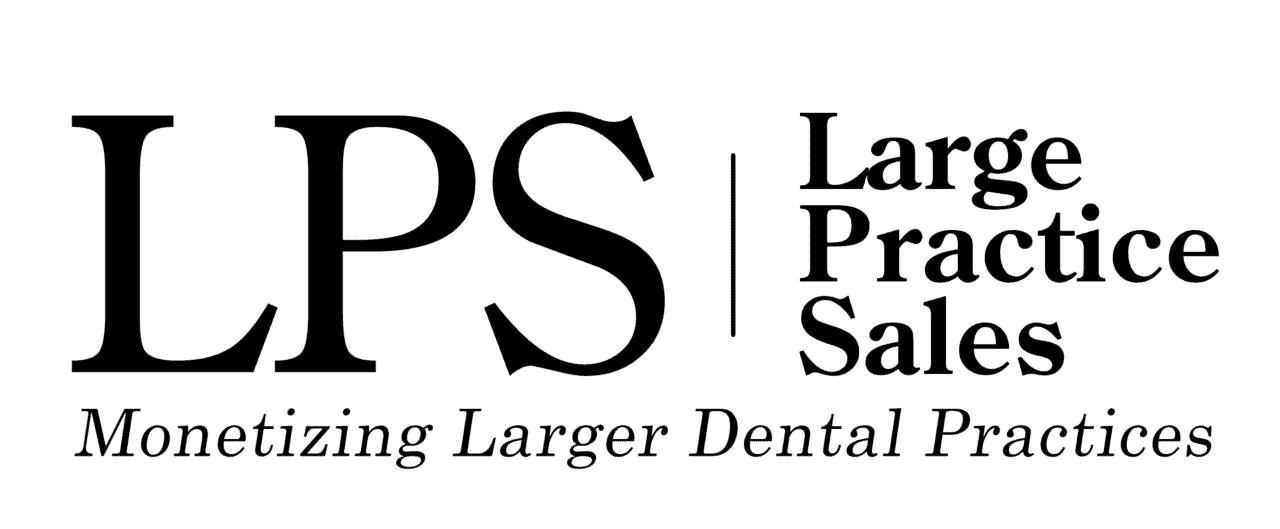In the ever-evolving landscape of dental practice sales and Invisible Dental Support Organization (IDSO) partnerships, a fundamental factor reigns supreme: Earnings Before Interest, Taxes, Depreciation, and Amortization (EBITDA). However, the art of calculating dental practice EBITDA varies significantly between IDSO partners, resulting in divergent valuations and potential value differentials.
Unveiling the Complexity of EBITDA for Dental Practices: Beyond Mere Multiples
In Q2 2023, Large Practice Sales had a $12+ million in collections practice client which had 18 qualified IDSO bidders. The range of EBITDA calculation for this practice, by the bidders, was from $1.5 to $2.6 million dollars. The same practice…and identical numbers provided to each bidder.
The end result of the bidding on this client range highlights how the X multiple achieved on EBITDA is functionally irrelevant; what matters is the who and the how the EBITDA is calculated. A 15x multiple on $500,000 in calculated EBITDA is $7.5 million. A 10x multiple on $750,000 in calculated EBITDA is the same…$7.5 million.
Deciphering Dental Practice EBITDA: An Art, Not a Science
The initial valuation for a practice in a sale or Invisible Dental Support Organization (IDSO) partnership is based upon Earnings Before Interest, Taxes, Depreciation and Amortization (EBITDA). The calculation of a practice’s EBITDA is an art, not a science. Every IDSO will calculate EBITDA differently. If you are letting the IDSO calculate your EBITDA, you can bet that it is not being calculated in your favor!
EBITDA can range by as much as a 50% differential, depending upon the IDSO making the calculation. Understanding the EBITDA calculation methodology utilized by each potential IDSO partner is critical to achieving maximum value. Not every IDSO partner will be the best fit for your practice.
In its simplest form, EBITDA is the operating profit of the practice after removing expenses for interest, income taxes, depreciation and amortization, and after deducting compensation for owner doctor’s contribution to the practice. Many doctors will ask their CPA to calculate a dental practice EBITDA and are provided with a number which does not deduct compensation for the owner doctor. What the CPA is actually providing is total practice owner’s benefit, assuming the doctor is paid nothing for their efforts.
The Compensation Challenge: Influence on Initial Practice Valuation
When calculating EBITDA, Associate doctor compensation typically remains as it has been paid historically. Ongoing compensation for the owner doctors in an IDSO partnership can vary widely and is negotiable. The higher the compensation paid to doctors in the future, the lower the initial value achieved for the practice. There is a direct and meaningful correlation between future compensation and initial value. The math and tax impact are both simple to understand.
Example:
General Practice with $5.0 million in collections with the two owner doctors generating $2.0 million of the collections.
Compensation for owner doctors at 30% of their collections = $600,000
Compensation for owner doctors at 35% of their collections = $700,000
In an initial transaction where the practice is valued at 7x EBITDA, the differential in ongoing compensation results in a $700,000 swing in initial value. Would the doctors rather get paid $100,000 per year more for five years ($500,000 in total) at 37% Federal tax rates?
OR
Would doctors prefer to receive $700,000 at closing at 20% Federal tax rates? The answer is obvious, and thus LPS client doctors offer to work for ZERO on a go forward basis. Unfortunately, the IDSOs want to compensate their partner doctors at rates comparable to replacement cost in their community. They cannot replace your collections for ZERO.
Other Impacts on EBITDA Calculation
When LPS calculates EBITDA for a client practice, we utilize the various prospective IDSO partner’s methodologies. This guides us to which IDSO partner will achieve the highest value for our clients and thus who we allow to bid on our client practices. As a few examples other than owner doctor compensation which drive an IDSOs calculation of practice EBITDA:
+ Allowance for the IDSOs costs of supplies and lab fees vs. existing practice costs; EBITDA Up
+ Allowance for costs of benefits; EBITDA Up, or Down for practices not providing team benefits
+ Adjustment for the IDSOs payer negotiated reimbursement rates; EBITDA Up
+ Allowance for reduced marketing and technology/software costs; EBITDA Up.
When combined with doctor compensation, some EBITDA adjustments can result in millions of dollars of value differential between two bidders presumably bidding the same multiple of EBITDA. The X multiple on EBITDA is only relevant when you understand the EBITDA calculation itself. It takes a professional who understands each IDSO’s methodologies to calculate EBITDA for transaction purposes.
Pro-Forma EBITDA Adjustments
EBITDA can also be increased or decreased based upon projections in cost reductions, revenue increases or in cost and revenue decreases. Examples:
+ In the months prior to closing, a doctor gave raises to team members increasing employee costs by $200,000 per year. In this 10x EBITDA transaction, this resulted in a $2.0 million reduction in initial practice value.
+ A practice with $2.0 million in Medicaid related collections was awarded a 50% Medicaid reimbursement increase. The $1.0 million in new collections, without any increased costs, will result in a $1.0 million EBITDA increase and a $9.5 million practice value increase in this 9.5x EBITDA transaction.
Methods to Increase Dental Practice EBITDA
Aside from understanding a potential IDSO partner’s determination of a practice EBITDA, doctors which understand EBITDA impact on practice values tend to watch their costs and focus on increasing practice collections. There are functionally only two ways to increase EBITDA in any practice; increase collections and decrease expenses.
Contact LPS today to learn how to best calculate your EBITA and achieve the highest possible values.
- Attributes of the Most Valuable Dental Practices & Dental Groups in 2025 - June 24, 2025
- The Fears and Concerns About IDSO Partnership - June 11, 2025
- The Emotional Benefits of IDSO Partnership; It is Not All About the Money - May 19, 2025
